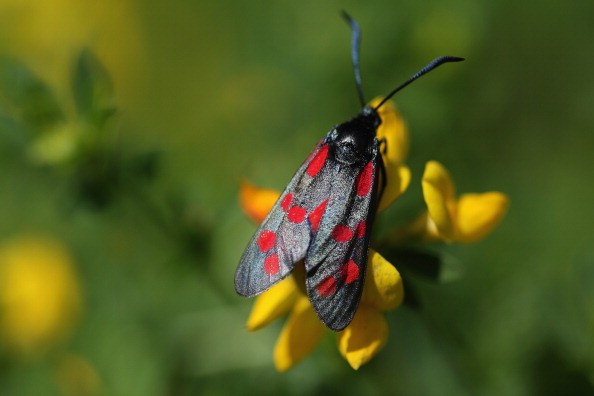The transformation of black-bodied peppered moth during the industrial evolution in the United Kingdom in the 1890s is one of the finest examples of evolutionary changes. Now, a team of scientists from the University of Liverpool has come up with an explanation about the change in color in moth that took place more than two centuries ago.
The researchers have discovered the genetic mutation that probably turned moths black during the industrial revolution. In a study published in the journal Nature, the researchers have described that a genetic mutation in the year 1819 led to the change in the color. In fact, the change took place in the same gene that makes tropical butterflies switch between different colors.
Prior to 1811, there were no evidence of dark-colored peppered moths. However, during the industrial revolution, the population of the dark-colored peppered moths increased drastically. By the end of the 19th century, the black-bodied variety had completely outnumbered the original light-colored moths.
Dr Ilik Saccheri has been working on the rapid evolutionary change in months for the past 15 years, according to the BBC. To figure out the gene behind the change in color of the moth, a team led by Saccheri started by traditional genetic mapping.
The team crossed black and pale moths and tried to track the genetic markers along each chromosome that linked to black coloring in moths. This led them to the discovery of a stretch of moth DNA containing 400,000 bases.
"We knew that within that 400,000 bases, there was some sequence that had to cause the actual difference between the black type and the typical type," Saccheri told the publication. "So we went about an excruciatingly tedious process of identifying every single difference between the two types."
The team finally figured out the 87 DNA difference between the pale and black lab moths, which the team tested again to check whether each variation was present in the original wild white moths. The team ultimately discovered a single gene that had to be a type of mutation.
This transposon, or the jumping piece of DNA inserted itself into a gene called "cortex." How this led to a change in the color of the moths still remains a mystery because cortex is known to play no role in moth pigmentation.
The following video explains the natural selection of peppered moths:



























